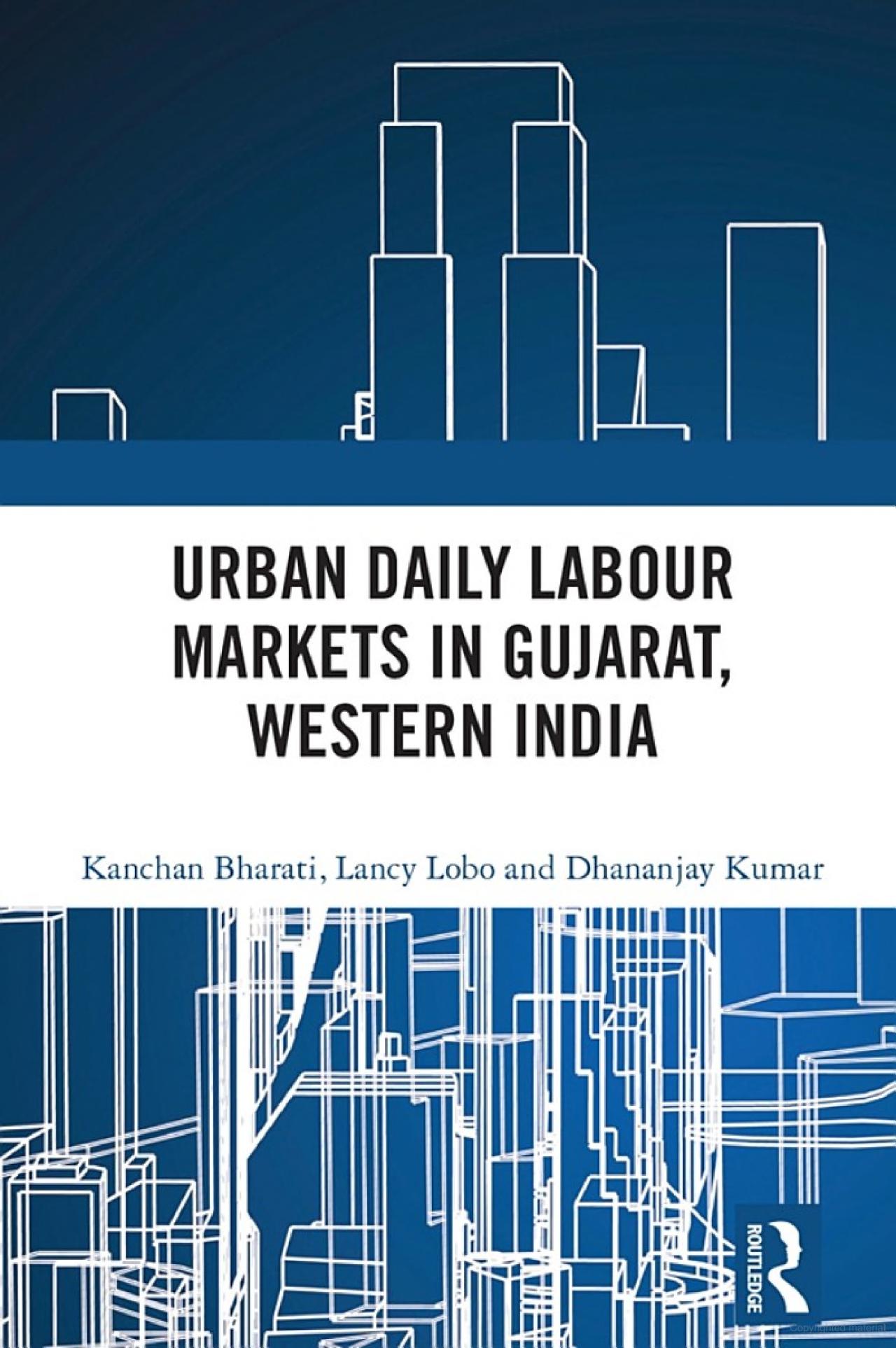
Urban Daily Labour Markets in Gujarat, Western India
By: Kanchan Bharati, Lancy Lobo & Dhananjay Kumar
2024. Urban Daily Labour Markets in Gujarat, Western India, Routledge India
This volume explores one of the most complex labour landscapes of India - the urban daily labour market. These markets form an important sector of the urban informal labour market and contribute significantly to the Indian economy. This book presents an empirical, comparative picture of dailylabour markets, in Gujarat, Western India.
These markets consist mostly of intra-state and interstate migrant workers who suffer from layered multiple marginalities based on markers of informality, migrant status, caste, ethnicity, gender and poor agency and often live in the peripheries of the cities without any rights and entitlements to their spaces and services. This study, based on an extensive survey of three cities in Gujarat, contains descriptions and analyses of the places of migration and their causes as well as the working and living conditions of the workers along with their spending patterns on food, health, education and leisure. It mirrors the work, life and issues of these workers on the regional level while contributing to a better understanding for future policy interventions.
An in-depth study, the book will be of interest to students and researchers of labour economics, labour studies, urban planning, social work, sociology, anthropology, and demography. It will also be useful to NGOs/trade unions working with migrant workers, civil servants in Labour department and other related departments, city planners and policy makers.
Tribes of Western India: A Comparative Study of Their Social Structure
By Dhananjay Kumar, Lancy Lobo
2023, Tribes of Western India: A Comparative Study of Their Social Structure, Routledge India
India has two key social formations, the castes and the tribes. Both groups can be studied from the perspective of society (samaj) and culture (sanskriti). However, studies on castes largely deal with social structure and less on culture, while studies on tribes focus more on culture than on social structure. What has resulted from this bias is a general misunderstanding that tribes have a rich culture, but lack social structure.
This volume emerges out of an in-depth empirical study of the social structure of five Scheduled Tribes (STs) in Gujarat, Western India, viz., Gamit, Vasava, Chaudhari, Kukana, and Warli. It analyses and compares their internal social organization consisting of institutions of household, family, lineage, clan, kinship rules and marriage networks. The book also deals with changes taking place in the social structure of contemporary tribal societies. While the focus is mainly on the data from tribes of Western India, the issues are relevant to pan Indian tribes.
An important contribution to the studies on tribes of India, this book will be of great interest to students and researchers of anthropology, sociology, demography, history, tribal studies, social work, public policy, and law. It will also be of interest to professionals working with NGOs and civil society, programme and policy formulating authorities, and bureaucrats.
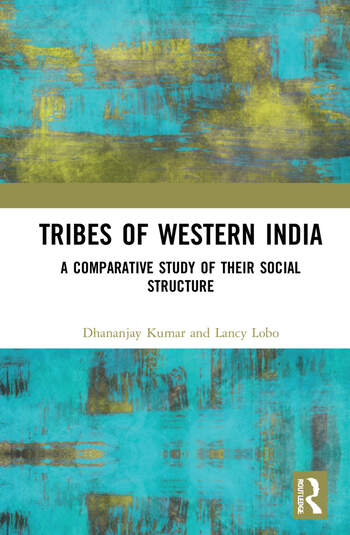

Seasonal Migration in Search of Livelihood: Choice or Fate
By: James C. Dabhi
2021, Seasonal Migration in Search of Livelihood: Choice or Fat, Centre for Culture and Development, Vadodara
The research to study migration of Adivasi families from south Gujarat was taken up by CCD at the request of the Provincial of Gujarat Jesuits. The objective of the research was to study the process of migration of Adivasis from the two districts of south Gujarat, namely the Dangs and Valsad The objective also included a critical analyse of migration in these districts and to understand thenuances of migration process, reasons for migration and the difficulties the migrant Adivasi and their families face. A total of 4533 households in 34 villages of Valsad and Dangs districts were studied through field visits, interviews and scheduled questionnaires. The report is available and we hope the research findings will help the stakeholders and others such as government and NGOs to help develop strategies to address the issues of seasonal migration. The project was undertaken and coordinated by James C. Dabhi.
Indian Anthropology Anthropological Discourse in Bombay, 1886–1936
By: A.M. Shah and Lancy Lobo (eds.)
2021. Indian Anthropology Anthropological Discourse in Bombay, 1886–1936, Routledge India
Indian Anthropology: Anthropological Discourse in Bombay 1886–1936 is an important contribution to the history of Indian anthropology, focusing on its formative period. It looks at the political economy of knowledge production and the anthropological discourse in Bombay during the late nineteenth century. This seminal volume highlights the much forgotten and ignored contribution of the Bombay Presidency anthropologists, many of whom were Indians, from different backgrounds, such as lawyers, civil servants, and men of religion, much before professional anthropology was taught in India. The other contributions are by pioneers from Bengal, Punjab, and United Provinces — all British administrators turned scholars.
This volume is divided into three parts: Part I deals with the six contributions on the history of the development of anthropology in India; Part II deals with four contributions on the methodology and collecting ethnographic data; and Part III deals with four contributions on theoretical analysis of ethnographic facts. The roots of many contemporary conflicts and social issues can be traced to this formative period of anthropology in India.
This book will be useful to students and researchers of anthropology, sociology, public administration, modern history, and demography. It will also be of interest to civil servants, students of history, Indian culture and society, religions, colonial history, law, and South Asia studies.![]()
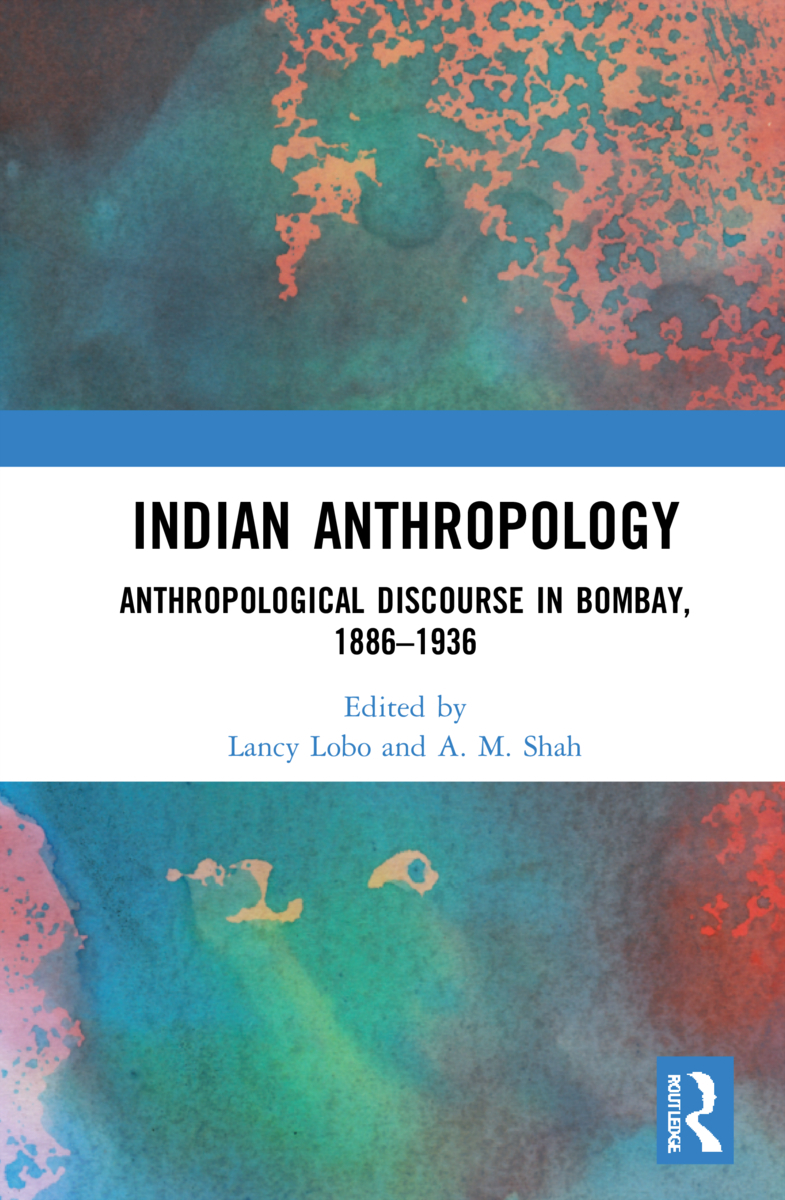
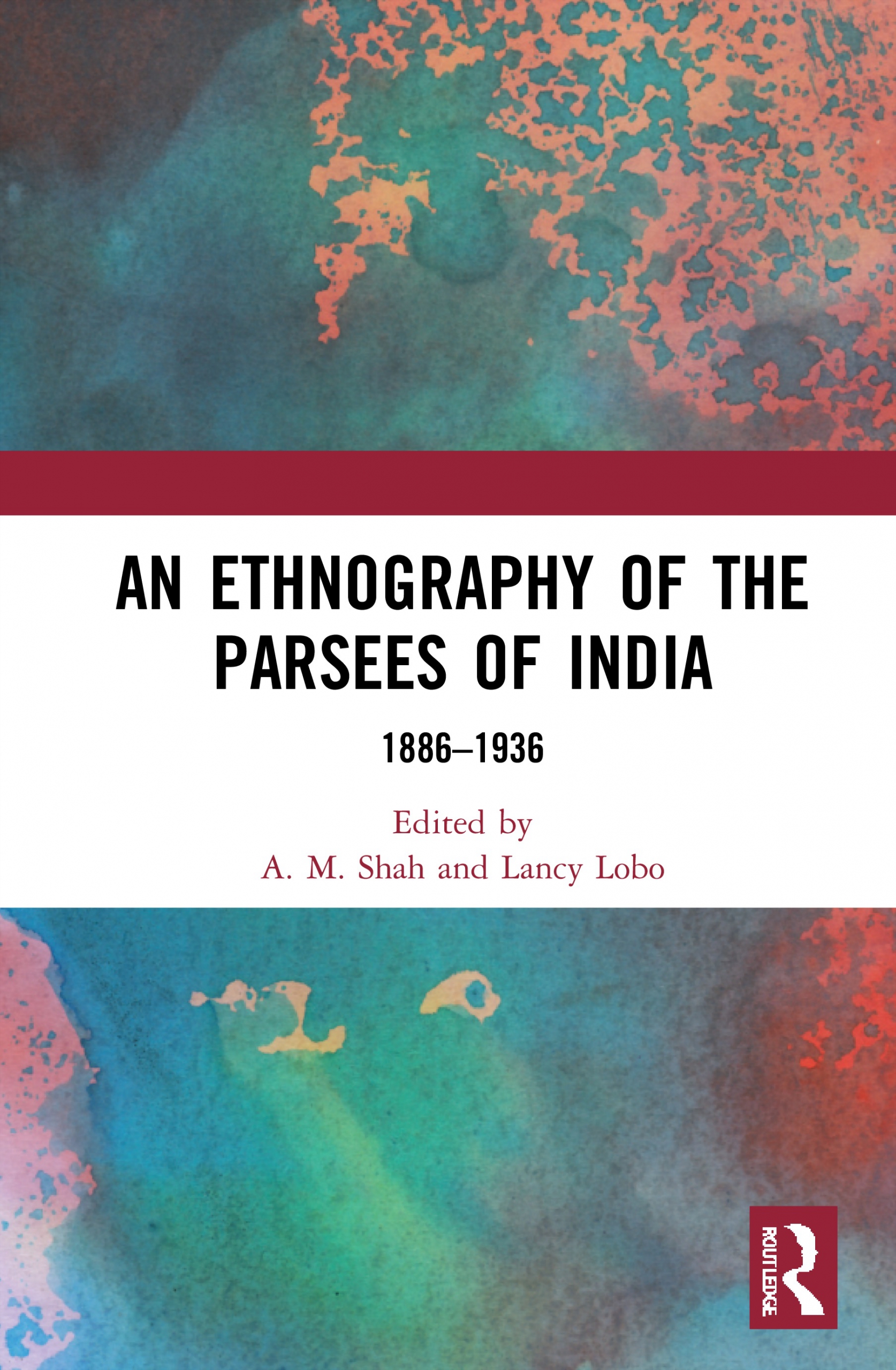
An Ethnography of the Parsees of India: 1886–1936
By by A. M. Shah (Editor), Lancy Lobo (Editor)
2021, An Ethnography of the Parsees of India: 1886–1936, Routledge India
This volume explores a wide spectrum of Parsee culture and society derived through essays from the Journal of Anthropological Society of Bombay (1886–1936). This journal documents intensive scholarship on the Parsee community by eminent anthropologists, Indologists, orientalogists, historians, linguists, and administrators in the late 18th and early 19th centuries. Comprising 0.05% of India’s total population today, the Parsees (now spelled “Parsis”) have made significant contributions to modern India.
Through contributions of Jivanji Jamshedji Modi, Bomanjee Byramjee Patell, and Rustamji Munshi, eminent Parsee scholars, the essays in this book discuss the social and cultural frameworks which constitute various key phases in the Parsee life nearly 100 years ago. They also focus on themes such as birth, childhood and initiation, marriage, and death. The volume also features works on Parsee folklore and oral literature.
An important contribution to Parsi culture and living, this book will be of great interest to scholars and researchers of sociology, social anthropology, ethnography, cultural studies, history, and South Asia studies.
Anthropological Explorations in East and South–East Asia
By: A.M. Shah and Lancy Lobo (eds.)
2021. Anthropological Explorations in East and South–East Asia, Delhi: Primus Books.
This volume is a collection of eighteen ethnographic essays on Anthropological Explorations in East and South –East Asia, reprinted from the almost forgotten Journal of the Anthropological Society of Bombay, published during 1886-1936. Divided into five parts, it includes works on history, religion, tea cult, the Torii of Japan and the Torans of India; a paper that deals with the veneration of dead in China; eight papers on Tibet: on its customs, devil driving processions, book procession of Lamas, Tibetan folklore in eastern Himalayas, and the method of computing distance by means of tea-cups; a paper on Burma on the monastic institution and its Phongys; and four papers on Malaysia dealing with the tiger in Malay folklore, folk medicine, etiological folktales, Burmese and Indian folk beliefs about the man tiger and the Malay version of two ancient Indian apologues.The volume suggests that the history of anthropological writings in India is much older than is believed to be. In addition, it also portrays glimpses of non-tribal societies beyond India studied by indigenous scholars. This book should interest anthropologists, sociologists, Buddhists, and students of East and South-East Asia.
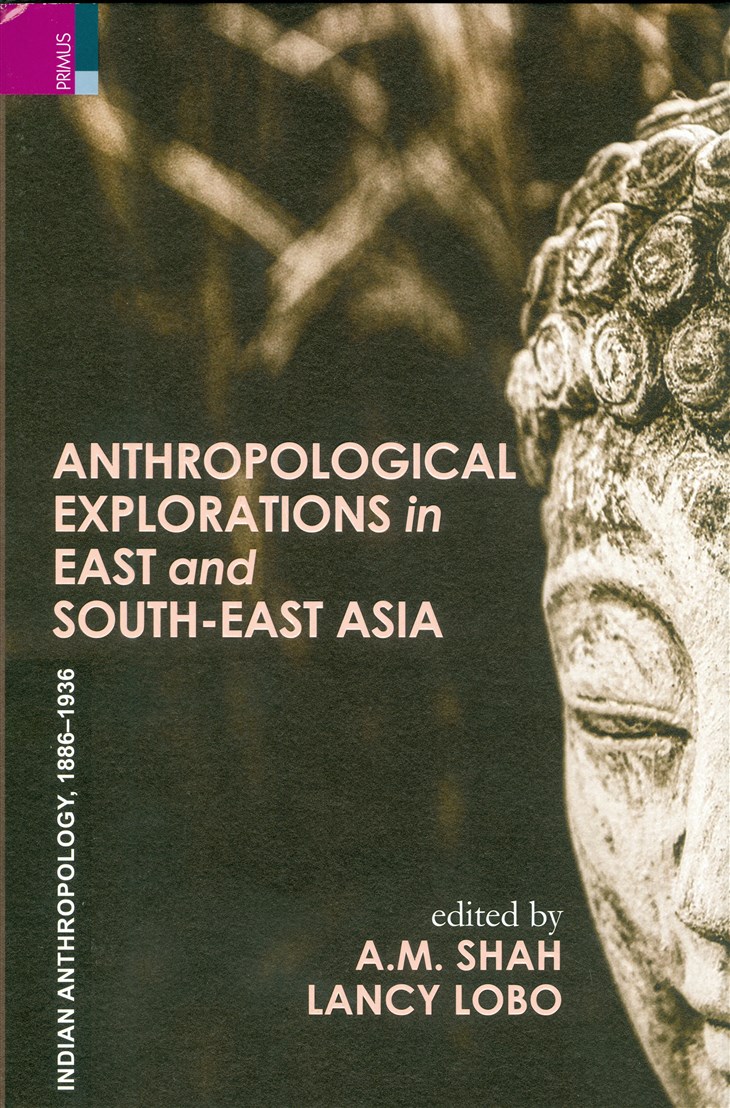
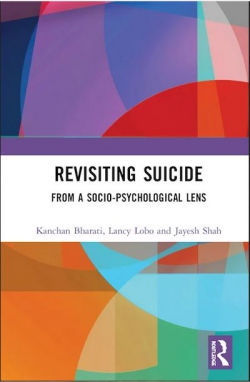
Revisiting Suicide:From a Socio-Psychological Lens
By Kanchan Bharati, Lancy Lobo, Jayesh Shah
2020, Revisiting Suicide: From a Socio-Psychological Lens, Routledge India
This book provides a socio-psychological enquiry of the phenomenon of suicide in the Indian context. It addresses the rising trend of suicides across the world and through case studies explores its primary reasons, the after-effects on survivors and families, and measures to prevent them. The volume focuses on deciphering the social and psychological meanings associated with suicide. Through an examination of psycho-social autopsies of numerous cases, it highlights the patterns and trends which emerge around mental well-being, suicide, and bereavement. It examines the primary roadblocks for robust suicide prevention measures and provides great insights into behavioural and personality categories and their relationship with suicide.Offering theoretical and empirical perspectives on the issue of suicide and self-harm, this book will be of interest to students, researchers, and faculty of behavioural sciences, psychology, social anthropology, demography, criminology, social work and sociology. It will also be an essential read for psychologists, counsellors, policy makers, NGOs, CSOs, legal experts and media personnel working in the area of suicide prevention and research. Book Review ![]()
Changing character of religiosity in Gujarat: Sacred Space, Time and Persona
By: Jayesh Shah and Lancy Lobo .
2020. Changing character of religiosity in Gujarat: Sacred Space, Time and Persona, Anand: Anand Press
With the level of religiosity breaching the 90% mark as per the latest World Value Survey, India today is in the select club of highly religious nations. At this point of time, many scholars have warned about the dangers of religious illiteracy among staunch religious followers especially in multi-faith societies where misunderstanding and ignorance can escalate into hostility, abuse and violence, and hinder cooperative endeavours in all arenas of human experience.This book studies the inextricable relation between religion and religiosity across space, time and persona. With these concerns, the authors emphasise empirical externalities of religion by observing the evolution of religious spaces and changing character of religious festivals over time. Findings from the empirical data justify the use of economic variables to understand religion and the changing demographics of religious pluralism. The analysis of religious and caste organizations throws light on how they have responded to the changing character of sacred time due to the economic shifts. In contrast to the ideas about spiritual gurus of old like hermits living in mountains, or bearded sages living in remote ashrams, this book shows the role of technology- powered godmen and women, some of whom have become India’s most influential and powerful figures. No matter how deeply held our beliefs may be today about perpetuity of religion, they are likely in time to be transformed, or simply fade away.The book raises many questions for social scientific research on religion. If religions have changed dramatically in the past, how might they change in the future? Is there any substance in the claim that belief in gods will die out altogether? As our civilisation and its technologies become increasingly complex, could entirely new forms of worship and celebration of festivals emerge?This book should interest scholars of philosophy, theology, religions, and social sciences. Book detail
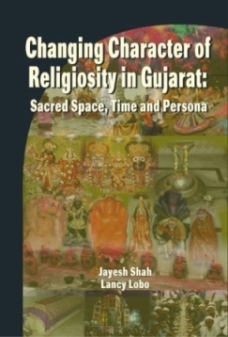
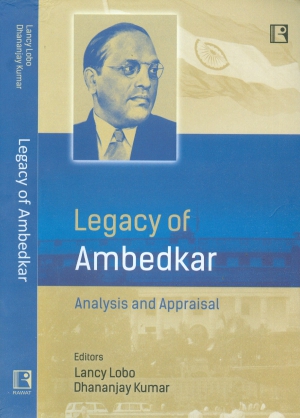
Legacy of Ambedkar: Analysis and Appraisal
By: Lobo, Lancy and Dhananjay Kumar (eds.)
2019. Legacy of Ambedkar: Analysis and Appraisal, Jaipur: Rawat Publications.
This collection of essays examines the legacy of Dr. B.R. Ambedkar with regard to his ideas of social democracy, eradication of caste system, formation and strengthening of constitutional institutions, and the role of religion and caste in a democracy. This volume is not a eulogy for Ambedkar, but an analytical attempt to look at his contributions and failures. The primary objective of the volume is to assess Ambedkar from a detached, unbiased and objective view in the light of changing contemporary India. The volume is organized into four parts. Part I discusses the strengths and limitations of Ambedkar's social, political and constitutional thoughts. It also demonstrates some of his ignored ideas such as the moral dimension of the Constitution. Part II deals with Ambedkar's idea of caste annihilation and his efforts for restoration of constitutional rights for the marginalized. Part III exemplifies his contribution to the development of the Indian Constitution, and his approach that the Constitution is not just an outcome of political revolution but also a product of research and deliberations. Part IV assesses the significance of Ambedkar's social, political and economic thoughts in the present era of globalization. The volume also illustrates some of his overlooked but relevant thoughts such as his idea of a training school for the budding politicians, his notion of social transformation, his approach to equity and justice in the neo-liberalized era, and his proposal to study neo-Buddhist values in the society. This stimulating volume, with its innovative analysis, will interest all those in the fields of Political Science, Sociology, Dalit Studies, and Ambedkar Studies. Book Review ![]()
HOW PEOPLE VOTE? : Civic Literacy and Political Participation
By: Lancy Lobo and Jayesh Shah. (eds.)
2019. HOW PEOPLE VOTE? : Civic Literacy and Political Participation, Jaipur: Rawat Publications.
How people vote in a liberal, open, competitive democracy is a big question in two senses. First, as Indian voters make up one-sixth of the world’s total electorate, their voting behavior considerably matters to the future of representative democracy everywhere. Second, as India faces so many challenges to its social, ideological and political cohesion, what people think about voting is significant to how India will evolve in the future.Political participation is central to the democratic system and civic literacy plays an instrumental role in it. This volume examines the impact of civic literacy on political participation, by studying voting behaviour in local, assembly and parliament elections in rural, semi-urban and urban areas of Gujarat. The conclusions are drawn from what people said and what was observed on the ground, combining booth-wise analysis of votes polled with indices of civic awareness and political participation.The main questions addressed are: (i) what is the level of civic literacy and political participation of the citizens? (Ii) How to measure civic literacy and political participation? (iii) What are the variables influencing civic literacy and political participation? (iv) How are civic literacy and political participation linked? (v) To what extent individuals vote as individuals, transcending caste and creed? (vi) To what extent has Indian democracy matured in terms of electoral behaviour.This book will interest students and teachers in social sciences, and all those engaged in citizenship education towards perfecting procedural and substantive democracy in India. Book Review![]() [1],[2]
[1],[2]
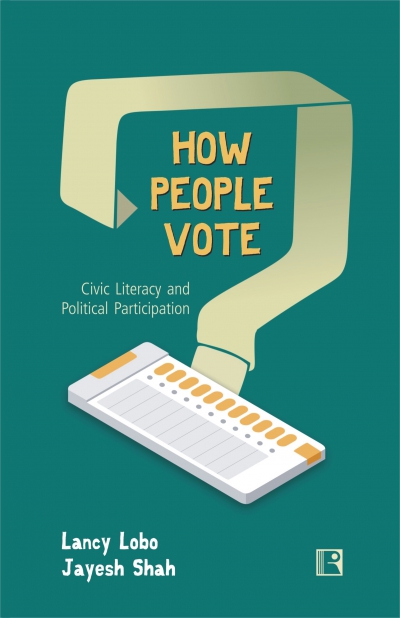
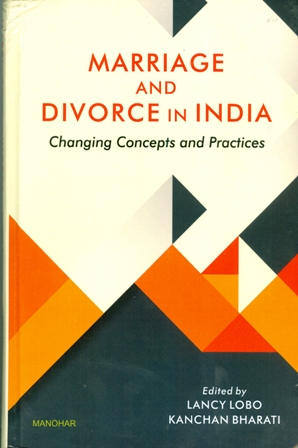
Marriage and Divorce: Changing Concepts and Practices
By: Lobo, Lancy and Kanchan Bharati (eds.)
- Marriage and Divorce: Changing Concepts and Practices, New Delhi: Manohar.
This volume explores the nature of social change in the fundamental institution of marriage in Indian society. It documents the churning going on in the conjugal bond with reference to gender inequality, patriarchy, domestic violence, divorce, separation, and remarriage under the impact of urbanization, modernization and globalization.The work includes fourteen papers divided into three parts. Part I discusses changes in the choice of spouse in terms of age at marriage and the age differential between spouses; endogamy and hypergamy; inter-caste and inter- faith marriage; and divorce and remarriage among Hindus, Muslims and Christians with particular attention to feminism. It raises new questions about the rising trends of separation, desertion, divorce, remarriage, and the option to live single. Part II takes a closer look at love, sex and marital relationships through the prism of films, state laws, and civil rights. It specifically deals with the live-in relationships, extra-marital relations, matrimonial litigation, and use and abuse of IPC 498A. Part III documents the changing character of spouse selection through the newer forms such as the print and electronic media and the shift from parental choice to individual choice. The volume will interest students and scholars of sociology, social anthropology, family studies, and law, as well as counselors, various religious organizations, and electronic and print media. Book Review ![]()
Essays on Suicide and Self-Immolation
By: Shah, A. M. and Lancy Lobo (eds.)
2018. Essays on Suicide and Self-Immolation, Delhi: Primus Books.
This book is a collection of papers on suicide and self-immolation, reprinted from the almost forgotten Journal of the Anthropological Society of Bombay, published in 1886-1936. The book carries a Foreword by Professor Ashis Nandy on death and self in culture. Part I includes nineteen papers, analysing statistics of suicides committed in Bombay (now Mumbai) from 1886 to 1907, classified by religion, gender, age, month, date, cause and means of suicide, etc. The data is presented in a number of tables, often with remarks on individual cases. Launched by Edward Rehatsek, a Hungarian scholar who had made Bombay his home, the papers were continued- after his death by the Parsee scholar, Bomanjee Byramjee Patell. Part II includes seven general essays: one is on suicide and old age in a comparative perspective, and another on suicide in ancient India. The question of self-immolation of Hindu widows, commonly referred to as sari, is discussed in three of the essays. Of special interest is the essay on the Sati of Ramabai, widow of Madhavrao Peshwa. Two essays deal with the issue of self- immolation of persons in religious contexts.Book Review![]()
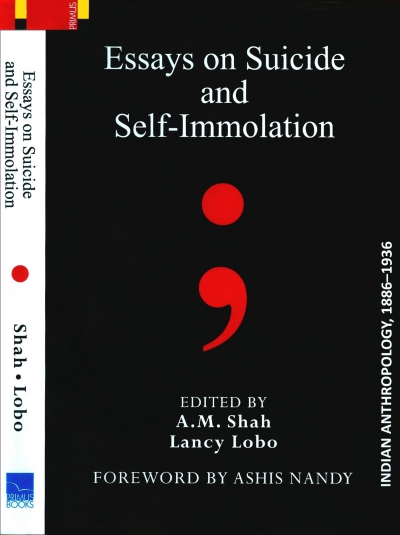
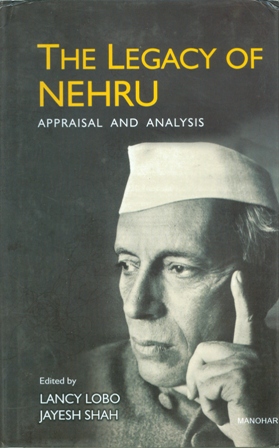
The Legacy of Nehru: Appraisal and Analysis
By: Lobo, Lancy and Jayesh Shah (eds.)
2018. The Legacy of Nehru: Appraisal and analysis, New Delhi: Manohar.
Even after 127 years, Jawaharlal Nehru remains a beacon for India. He was a titan who provided the architecture of contemporary India. The credit for much of India's progress in myriad fields goes to him. This volume, however, is not a eulogy to that great visionary. It provides rather a critical examination of his legacy in various fields, such as his promotion of India as the Union of federating states, building up of the structure of democratic institutions, enunciation of viable foreign policy, laying the path of economic development on the foundations of equality and cultivating secular ethos. The primary objective of the book is to assess the imprint that Nehru has left behind, and the impact that his thoughts and actions produced on the people of the present and succeeding generations. The volume deliberates on the question whether Nehru had a well- defined economic ideology or foreign policy which could be given a recognized label. It also focuses on how Nehru handled the various sectors and institutions of society. While this volume praises Nehru for providing a durable basis for India's democratic institutions and for endowing them with much legitimacy, it also evaluates many of his negative legacies, such as license raj, the border problems with China and Pakistan, divisive domestic electoral politics, politicization of minorities as vote banks, the Kashmir problem, and corruption in public life. The volume is a collection of insightful essays by distinguished scholars in various fields. It will be of interest to all those seeking to understand modern India with particular reference to Nehru. Book Review![]()
Religious Demography of India: Myths and Realities
By: Lobo, Lancy and Jayesh Shah (eds.)
2017. Religious Demography of India: Myths and Realities, Jaipur: Rawat Publications.
Much of public life in India is characterized by the forces of its religious demography. This volume aims at unravelling its complexity. Each of these essays reflect the truism that religion unites as well as divides peoples. Religious demography not only decided partition of India and Pakistan, but also continues to play a major role in India's democratic politics. The subject has become more emotional especially in the context of electoral politics. A great anxiety about the Hindus being outnumbered has been kept alive in India, especially before the elections. The differential growth rates of religious communities have therefore become a sensitive issue. It is an established fact that there is an illicit dramatization of misrepresented statistics of the Census. Data on population has been especially 'used' to generate 'nationalism'. Newspapers, magazines, television and even caste journals have propounded myths, with catchy titles. This volume tries to probe into these myths and realities. Demographers have, however, demonstrated that no major religious community in India has been declining in absolute numbers, except Parsis. The whole discourse is thus aimed at obliterating pluralism of identities, by provoking a fear of the other, and propagating a constant myth of a catastrophic decline in the majority population. In post- independence India the majoritarian assertion has generated its own antithesis in the form of minority religious assertiveness and a resulting confrontational politics that undermines the syncretic dimensions of the civil society. This volume attempts to dispel some of the myths propagated by those who seek political power under the religious cover. This book will interest not only demographers but also sociologists, social anthropologists, political scientists, and all other observers of India's public life. Book Review![]()
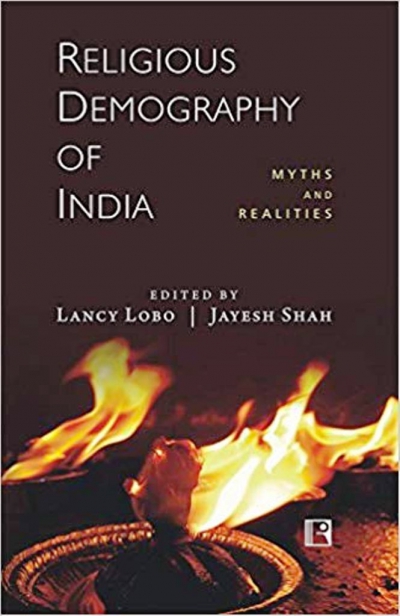
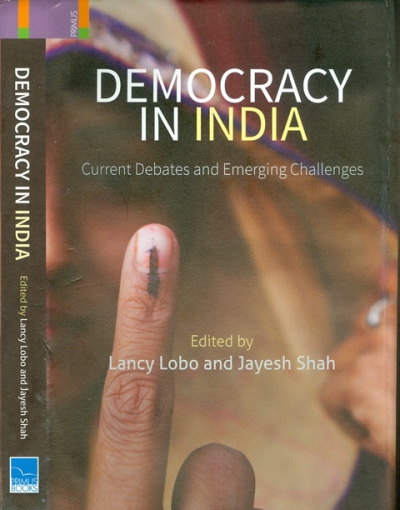
Democracy in India: Current Debates and Emerging Challenges
By: Lobo, Lancy and Jayesh Shah (eds.)
2017. Democracy in India: Current Debates and Emerging Challenges, Delhi: Primus Books.
Democracy in India deliberates on the various challenges confronting parliamentary democracy in India as well as provides new critiques of the manner in which democracy has functioned besides focusing on the strengths and weaknesses of Indian democracy. The volume contains essays on the theory and practice of democratic governance; the role of the judiciary in strengthening the legislative and executive functions of the state; the role of the media as the fourth estate; the rise of social movements and civil society; the critical role of economic development in sustaining democracy; and the role of democracy in containing ethnic conflicts. It also includes an essay analysing electoral behaviour at the grass-roots level and another that examines democracy from the gender perspective. This book also provides a platform for discussion of crucial issues and alternatives, put forth by the intellectual comity of civil society activists and the academia. Book Review![]()
Forests and Tribal Livelihood: Changing Behaviours and Attitudes
By: Lobo, Lancy and Jayesh Shah
2017. Forests and Tribal Livelihood: Changing Behaviours and Attitudes, Delhi: Concept Publications.
This book is about the changing character of forests and of livelihood of the forest-dwelling tribal people in India since Independence, with particular reference to Gujarat. It analyses the impact of a number of interventions by the Central and the State Government, such as construction of dams, setting up of industries, and other developmental activities in these areas. It reviews, in particular, various laws adopted by the British colonial Government as well as the government of Independent India regarding forests and the tribals, and how the tribal customary laws conflict with the laws of the modern state. Another focus of the book is the migration of the tribals, temporary or permanent, from rural to urban areas, from one rural area to another, or from one town to another. It analyses, in particular, how a number of tribals retain strong links with their original villages for the benefit of household members in both locations, and how increased migration has caused cultural disruption. The book dwells into the decreasing dependence of the tribals on the forest and its products, and the increasing adoption of alternative sources of livelihood such as dairy farming, horticulture, and modern techniques in agriculture. Finally, the book critically reviews policies regarding forests and the tribals, and suggests amendments. Book Review ![]()
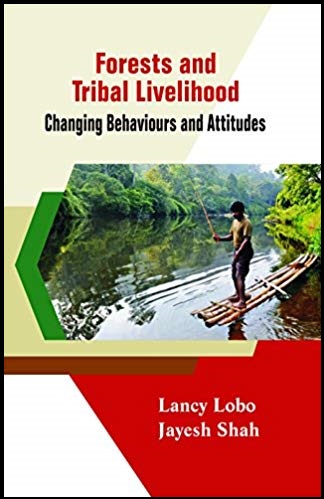
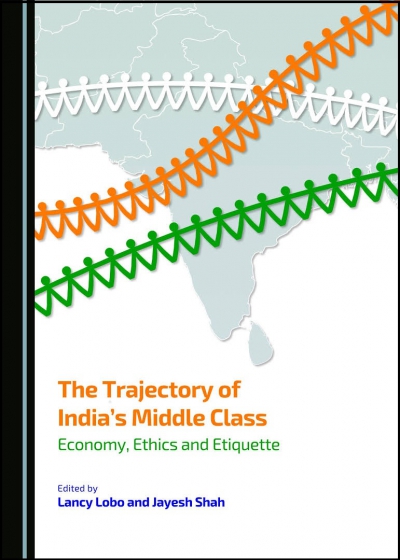
The Trajectory of India's Middle Class
By: Lobo, Lancy and Jayesh Shah (eds.)
2015. The Trajectory of India's Middle Class: Economy, Ethics and Etiquette, UK: Cambridge Scholars Publishing.
The Indian middle class has grown rapidly over recent years, and constitutes a significant proportion of the global workforce, as well as a substantial market for consumer goods, given India's status as one of the most populous countries in the world. However, the growth of India's middle class is not merely an economic phenomenon. This volume, containing nineteen essays, an editorial introduction, and a foreword by Lord Meghnad Desai, examines the role of the Indian middle class in the country's economic development, as well as in social, cultural and political change. The volume also focuses specifically on the social, political and economic articulation of the middle class with regard to historically marginalized social groups such as the Dalits, the tribal communities, and the religious minorities. This book will be of interest to economists, political scientists, sociologists, social anthropologists, and historians, as well as to specialists in current affairs.
Federalism in India
By: Lobo, Lancy, Mrutuyanjaya Sahu and Jayesh Shah (eds.)
2014. Federalism in India: Towards a Fresh Balance of Power, Jaipur: Rawat Publications.
Federalism is one of the most important and effective political institutions in India. However, the late 1990s witnessed a weakening of national political parties, the emergence of coalition politics and a shift in the center-state power balance. Politically, however, with the rise of regional parties and coalitions, states seem to have gained an upper hand in many spheres of governance, whereas the center finds itself restricted when there are serious problems regarding law and order issues, foreign policy matters or fiscal decentralization. Hence, provisions and articles narrated in the Constitution of India demand revisit as India needs a fresh balance of power looking to the new 'low' in center-state relations. The volume critically brings to the fore the fact that the championing of federalism by the regional parties at the state level works against decentralization further down in reality. Chapters in this volume address a wide range of complex issues affecting the center-state relations in the context of political, social and economic developments. It carries a Foreword by Lord Bhikhu Parekh.
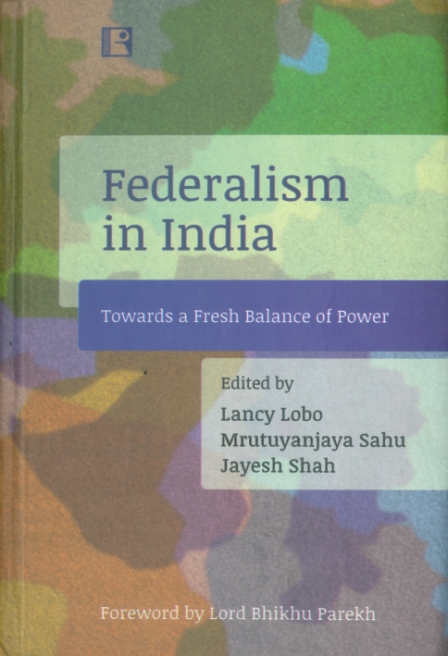
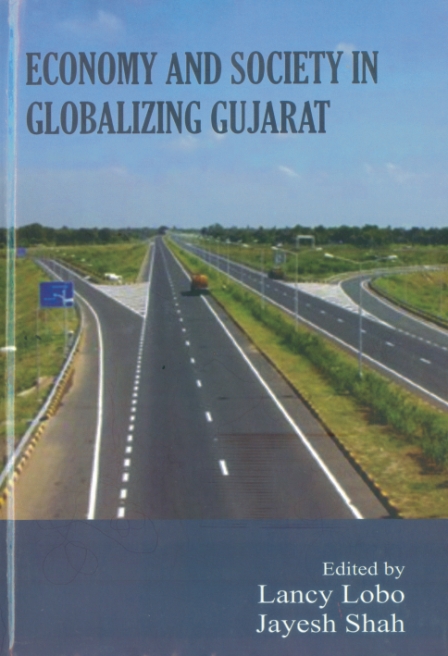
Economy and Society in Globalizing Gujarat
By: Lobo, Lancy and Jayesh Shah (eds.)
2012. Economy and Society in Globalizing Gujarat, Delhi: Shanti Prakashan.
This book attempts to capture the nature of changes in the economy and society of post-liberal Gujarat. While the growth-centered developmental model operating in Gujarat has mesmerized many, both in India and abroad, this book critically examines this model with reference to infrastructure development in fields such as water resources, transport, communications and industry, especially their impact on agriculture and services. The book highlights the other side of development, namely, the costs of globalization resulting in uneven regional development, destruction of natural resources, and negative impact on the environment and on the status of women, and marginalized groups. The book also looks at labour, education, and human development indicators. All in all, it shows the extent to which Gujarat illustrates the growth centric India of tomorrow.
Globalization, Growth and Employment
By: Lobo, Lancy and Jayesh Shah (eds.)
2012. Globalization, Growth, and Employment: Challenges and Opportunities, Jaipur: Rawat Publications.
Globalization and subsequent changes are affecting all national economies irrespective of whether it is a transitional, controlled, socialist, or market economy. The result of this change is a paradigm shift in the employment structure of most of the countries. This volume makes an attempt to evaluate the employment scenario in different sectors of Indian economy after the reforms period. It also makes a comparative study of employment scenario between Gujarat, one of the developed states, and the country as a whole. Employment intensity of economic growth with focus on rural transformation, social security, quality and employability, survival of marginalized labouring poor and social income throws light on the realistic scenario. Retail boom, establishment of SEZs and SIRs and social security schemes like MGNREGA have suggestive thrusts in the domain of employment and consequences such as migration and their effects on society and culture.
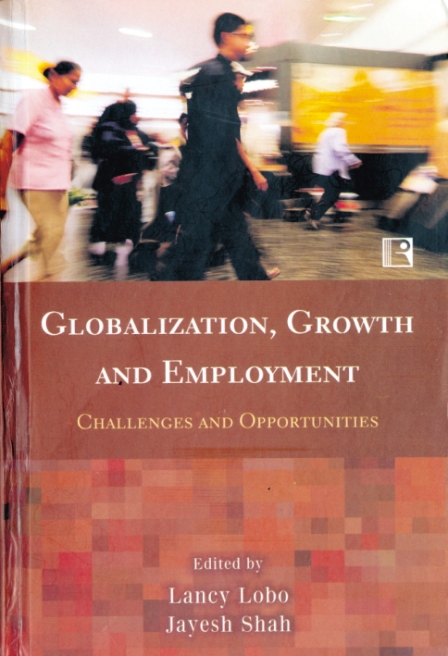
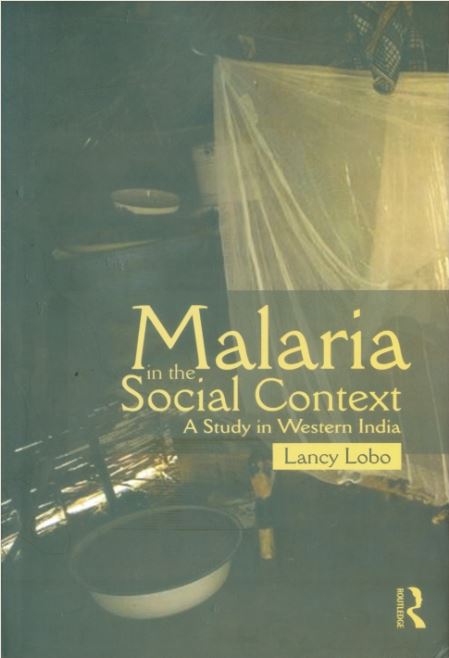
Malaria in the Social Context
By: Lobo, Lancy
2010. Malaria in the Social Context: A Study in Western India, New Delhi: Routledge.
This is a path-breaking book in medical anthropology, a field of study which is in its infancy in India. It examines traditional knowledge systems in conjunction with biomedical elements to promote effective health education. An empirical study of malaria in the social context, it explores folk beliefs, attitudes and perceptions affecting various aspects of incidence and treatment of malaria in south Gujarat, in a culturally and socio- economically stratified population in three ecologically differing rural zones - coastal, irrigated plains, and dry highland - and one urban site. Based on intensive fieldwork and extensive surveys, the book brings out the importance of medical pluralism, including the role of indigenous ideas and practices, and analyses the role of private and government appointed doctors at the village level while examining the impact of allopathic medicine. The book aims to assist health interventionists in spreading efficacious health education and awareness to eradicate malaria. Book Review![]()
Land Acquisition, Displacement, and Resettlement in Gujarat 1947 - 2004
By: Lobo, Lancy and Shashikant Kumar
2009. Land Acquisition, Displacement and Resettlement in Gujarat: 1947-2004, New Delhi: Sage Publications India Pvt. Ltd.
This book is a first-ever detailed analysis of the land acquired for development projects and their impact on the displaced and project-affected people of Gujarat, from 1947 to 2004. It begins with a debate on the meaning of the term 'development' and focuses on displacement, marginalisation and impoverishment as direct consequences of admittedly debatable methods of progress adopted in Gujarat in the name of development. The book presents a comprehensive account of land acquired for water resources, industries, mines, HRD, transportation/communication, and urban development projects and focuses on the people displaced and affected by them. Additionally, it pays special attention to the legislative hurdles in rehabilitation and compensation procedures which follow displacement. Book Reviews![]() [1] [2] [3] [4] [5] [6] [7]
[1] [2] [3] [4] [5] [6] [7]
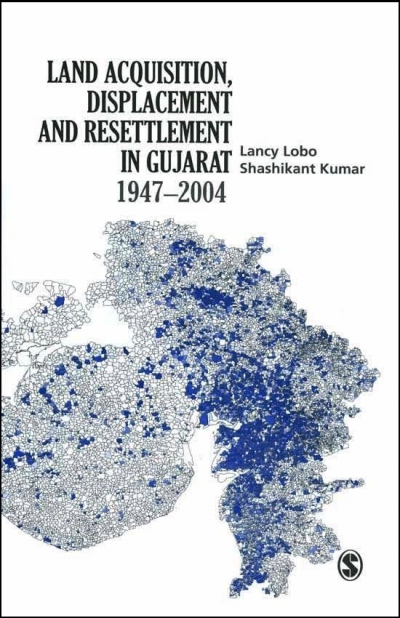
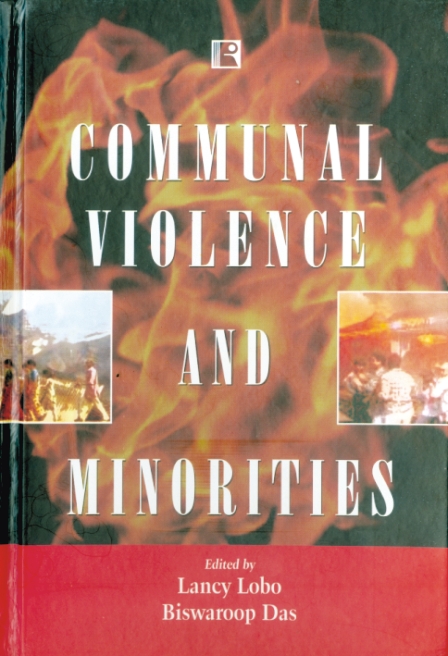
Communal Violence and Minorities
By: Lobo, Lancy and Biswaroop Das (eds.)
2006. Communal Violence and Minorities: Gujarat Society in Ferment, Jaipur: Rawat Publications.
The 2002 Gujarat riots witnessed the rise of a spate of writings on related issues in India as well as abroad. The present volume, though deals with the same subject, add some newer dimensions to its understanding. These include an analysis of the spread of these riots; contents, causes and nature of violence; actors and agencies perpetrating and facilitating its sustenance; response of tribals and Dalits to these events; socio-political determinants of perpetuating as well as thwarting the effects of such riots and the cognitive construction of communal images among the rural population in Central Gujarat during the aftermath of these unprecedented riots in the State. Book Review ![]()
Globalisation, Hindu Nationalism and Christians in India
By: Lobo, Lancy.
2002. Globalization, Hindu Nationalism, and Christians in India, Jaipur: Rawat Publications.
Growing 'economic fundamentalism' triggered by the process of globalisation and rising religious fundamentalism at the micro as well as macro levels have emerged as a complex area of analysis. This book deals with such a problematic by examining the position of the Christian minority group in India within the fast changing socio- economic milieu of the subcontinent. It argues that marginalization of the minority groups through legitimization of a reductionist religio-economic model has been on the rise. And, the brunt of this mix of economic and religious fundamentalism is borne by the poor, the underclass and the minorities who may eventually be left out of the modernization project altogether. Book Reviews![]() [1] [2] [3] [4] [5] [6]
[1] [2] [3] [4] [5] [6]

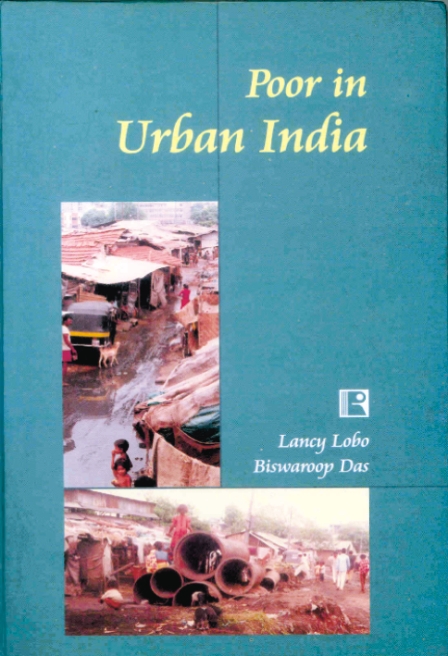
Poor in Urban India
By: Lobo, Lancy and Biswaroop Das
2001. Poor in Urban India: Life in the Slums of a Western Indian City, Jaipur: Rawat Publications.
The prominent features of urbanisation in India have been the increase in population, the growth of slums, swelling labour force and its marginalisation, and increasing pressure on the urban space and infrastructural services. A growing need has been felt to investigate the reasons for the decay of our large cities and for the extremely unsatisfactory living conditions even in our non-metro as well as smaller and medium-sized towns. The book deals with the modes, means and mechanisms through which the poor in urban India cope with their lives. By providing a portrayal of the lives of slum dwellers through an exhaustive database on the slums of Surat and an intensive analysis of one of its slum localities, it captures the socioeconomic world of the urban poor in India. The book will interest anthropologists, sociologists, human geographers and city planners. Book Reviews![]() [1] [2]
[1] [2]
